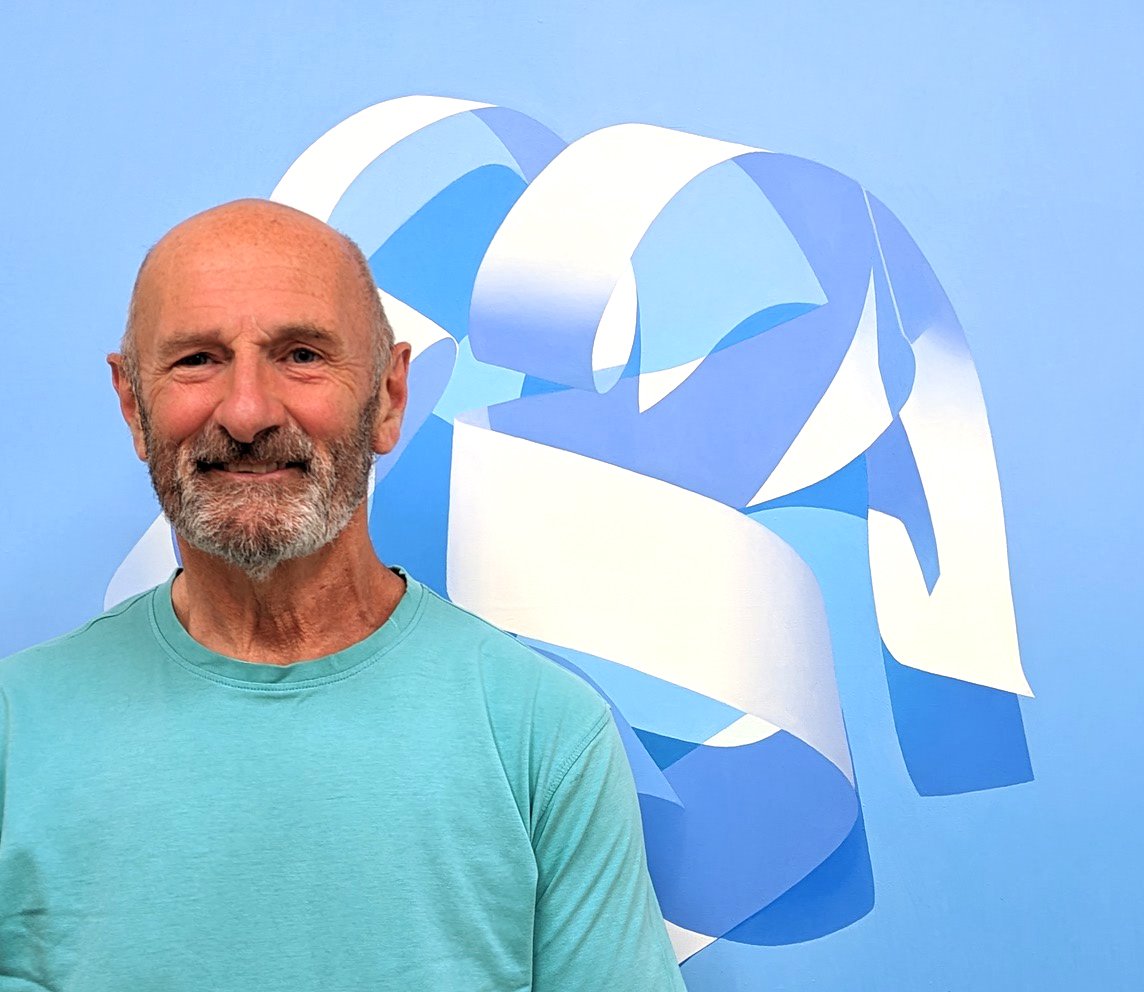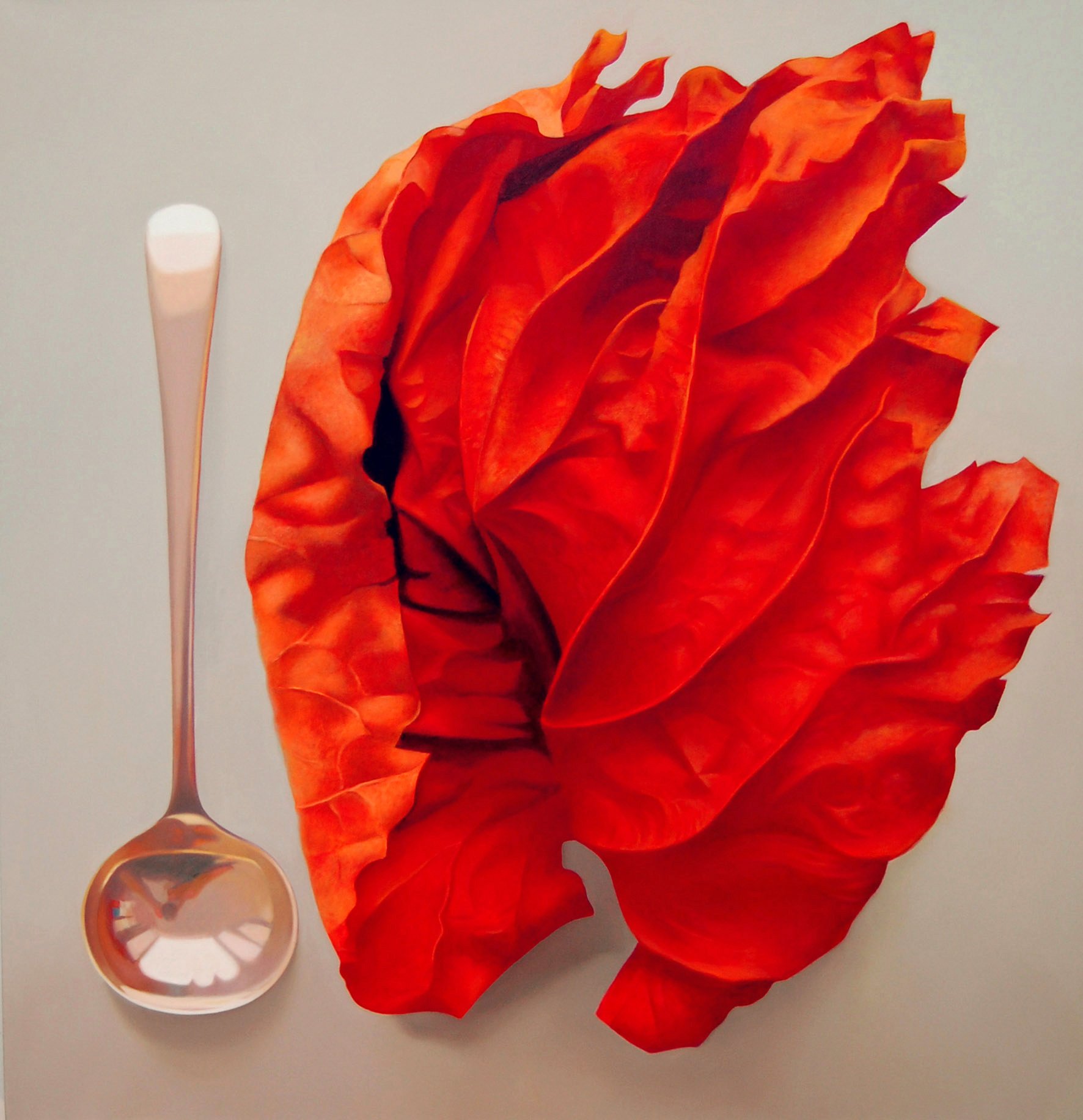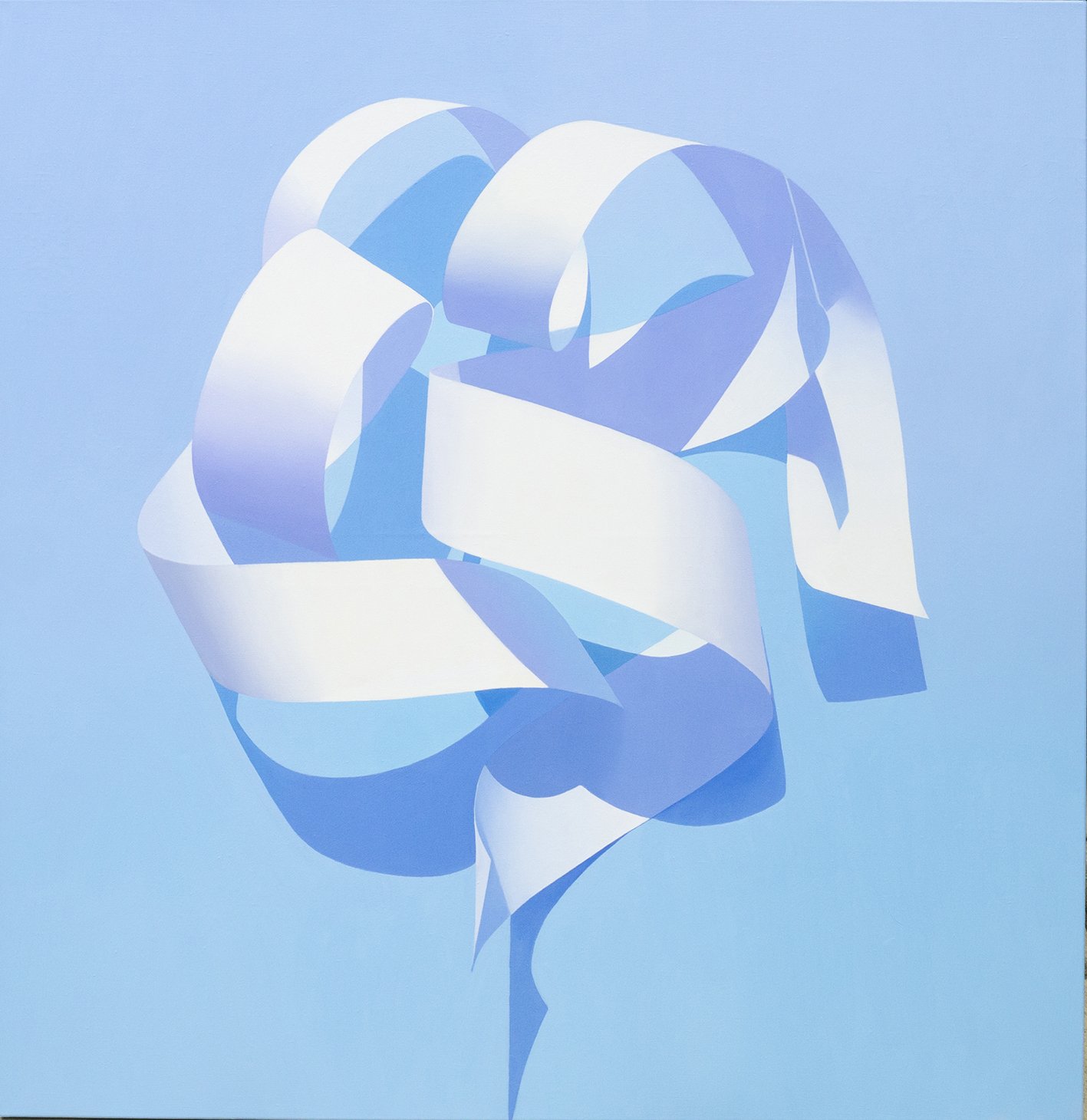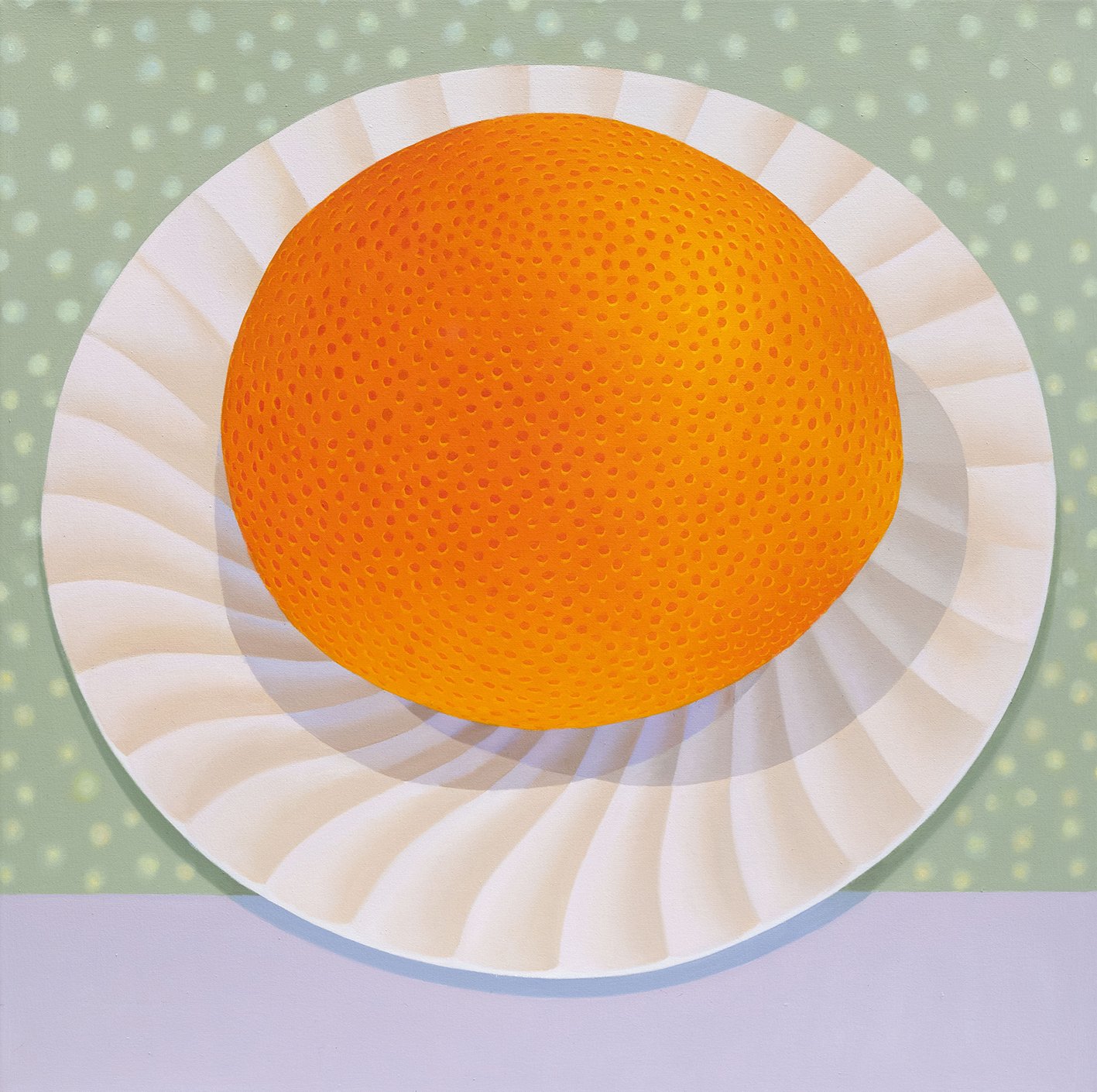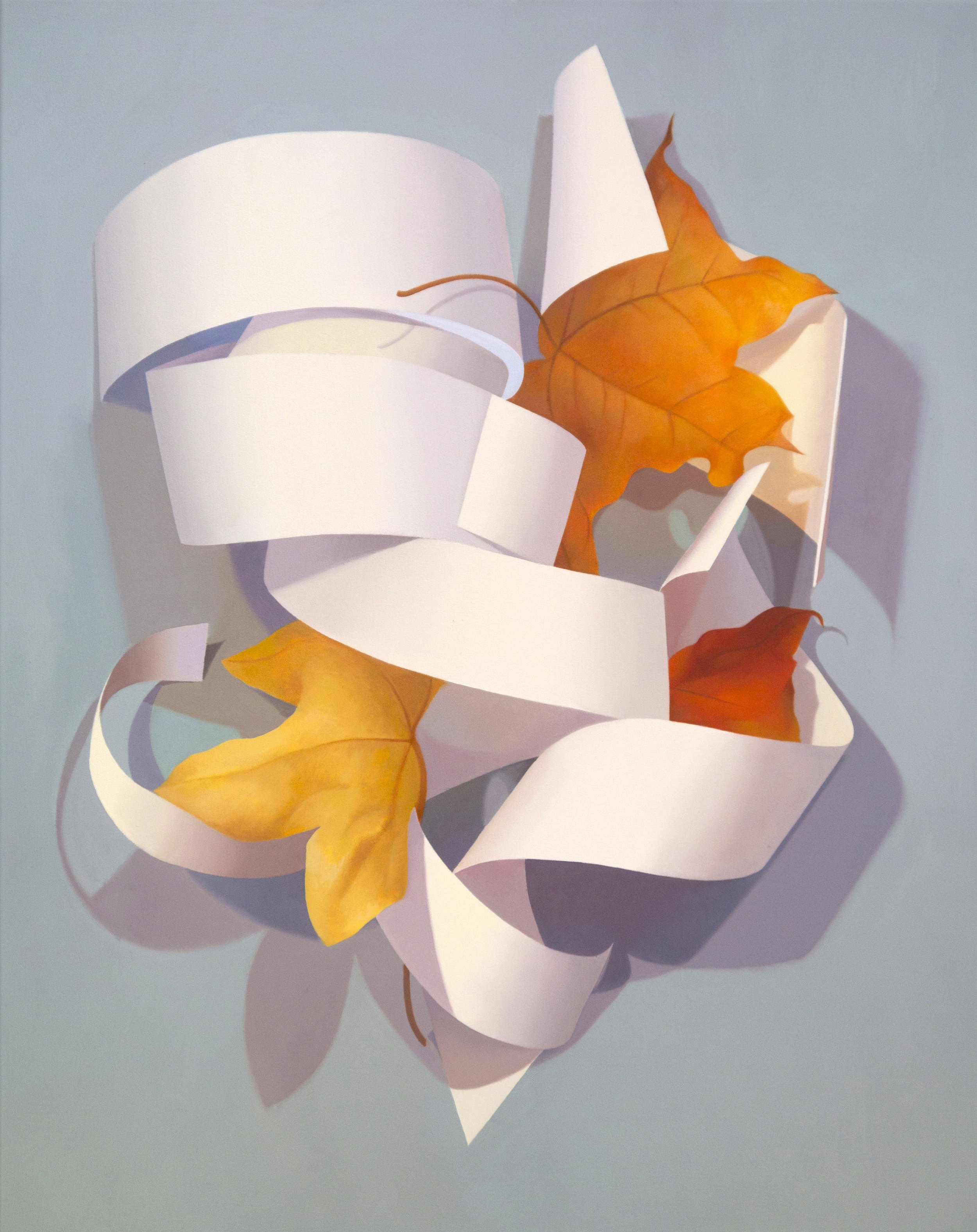ARTIST INTERVIEW: Robert McPartland
Please introduce yourself. What inspired you to pursue a career in art?
I grew up in North Yorkshire. I studied and lived in London for over 20 years and now live in Cardiff, Wales with my wife Stephanie Tuckwell, who is also an artist; we have two grown up children. I was an only child and always drew, painted and made things; it was who I was from an early age. After finishing school it was, to me, inevitable I wanted go to art college - in fact, I was very lucky my Mum was so supportive; I came from a working class background and the concept of a career in art was alien. Despite my degree in Fine Art 4 years later, I still had no idea what a career as an artist might look like. Post grad didn’t happen for me, so I worked various jobs including in art galleries to support myself while I painted. After 5 years, I trained as a school teacher and so I remained for 28 years whilst continuing to paint. A career in art never happened, but I have been very lucky in my personal life and can now go in my studio every day. For me, being an artist and an art career are two different things.
Your paintings show the beauty in objects that would usually be overlooked in everyday life. What draws you to the objects that
you feature in your pieces? Why are they significant to you?
My response to objects is intuitive, but I suspect I may have a few biases…if man made, I am drawn to simplicity of form, be it matt or shiny. Natural forms tend to be richer in colour, texture etc. Sometimes a form may have a real individuality, but mostly I’m interested in its relationships with other forms/elements, so their identities are very mutable.
Then there is the “background”, usually sheets of coloured card or paper, which are another element. It’s just as much about the spaces I can discover around the forms and, again, their mutability. I’m very aware that forms and space can also be metaphors; it’s how we make poetry, indeed how we understand the world, but I avoid their conscious use, preferring to be open to them if they surface. I try to come at things sideways, passively maybe, and surprise myself. The conscious mind is usually egocentric and will more than likely screw up/overstate/self-serve, so over the years I’ve developed lots of strategies to try and avoid this - not always successfully! Coming from abstract painting, I found painting arranged objects (“still life”), allowed me to keep things very open formally and offered a huge range of response. I came to understand why Picasso and Braque used the genre so much in the early days of Analytical Cubism - so much is possible.
How do you use colour to reflect a mood/narrative in your work? Do you have a favourite colour palette to use?
Maintaining a consistent “mood’ in my works is not something I consciously strive for - I don’t have a favourite time of day or year; each one has its fascination. As I’ve become older though, I do seem more drawn to air, light and space, so my palette does reflect that more. I don’t use a set palette for the same reason, to avoid systematising my process. Light is king and sometimes its relationship to colour can be inverse; strong light can bleach, low, evening light creates deeper, more saturated colour. Often, I use multiple light sources, which creates more shadow elements. I try to keep neutral colours as saturated as I can, and hold back a bit on saturated colours. The glory of oil paint is that your mixing palette is on the canvas too - the subtlest gradations and tones are often the result of working the surface.
What is your creative process for creating one of your paintings? How do your pieces evolve from start to finish?
I play with objects and record compositions with a camera. I then play with the images on Photoshop and leave them for a while - sometimes years. I return to them fairly regularly and play again. I may then draw from them and alter aspects. Scale really matters and finding the right size to paint a subject can be tricky; again, if my conscious, conceptualising, egocentric mind decides to take charge, it usually ends in failure, so it has to be a process with no fixed rules. Sometimes I might be out, see something and use my phone camera to record it/ make a visual note. Working on the painting is a process of addition and reduction and though by this point the composition is more or less sorted, I try to edit out anything that’s not essential. Intuition is paramount - sometimes I’ll work on a painting and not really “see” it until I’ve built a relationship and it reveals itself - “talking back” as many painters describe it. For me, a painting really is like an independent being with its own life that needs time to develop, mature maybe. It’s not just paint on canvas and that’s the magic of painting.
Having a strong composition is key to your paintings. In your opinion, what are the characteristics of a successful composition?
Balance and harmony of emotion and form.
Is there a particular reasoning as to why you are inspired by Zen Philosophy?
My college tutors were of the generation who were influenced by the Abstract Expressionists and an interest in gestural calligraphy and associated Eastern philosophies was part of that. In my last year at college, I started to read some introductions to Tao and Zen but looking back, weirdly, I didn’t meditate for many years. Zen is a relatively non-verbal, non-ritualised/systematised, but practical form of Buddhism, which chimes well with visual creatives, I think. It’s rooted in the here and now and there’s a pared back aesthetic and a refusal to accept what is given, a favouring of the individuals journey that doesn’t deny the “thingness” of the world. The aim is to wake up and see the everyday world we live in with awareness and clarity. Zen is a special transmission outside the scriptures, not based on words or letters, a direct pointing to the heart of reality so that we may see into the heart of our own nature and wake up” Bodhidharma. There’s a Zen saying about speaking about large things with small things that has stayed with me. Like a single drop of water and an ocean, the particular and the universal are of the same; my use of scale has grown from this. I think it’s fair to say that for many years, any reference to spirituality by artists has been viewed with suspicion or worse, despite the early years of Modernism, but things are changing, which I’ll come back to later. I have a layman’s interest in science and the parallels between contemporary physics and Eastern thought - and the process of painting - are quite extraordinary. In the Heart Sutra, form and emptiness/space are mutable - the same as in painting!
What thoughts and feelings would you like to evoke from the viewer? How do you feel when creating your work?
Earlier in the day, I might think I’m a towering genius but by late afternoon, I realise I’m not; the trick is to stop before I get to the point where I “know” I’m useless and it should go in the bin. The next morning it usually looks better than I thought it did and off I go again, until something happens and it starts to look back. That can usher in a period of real joy/flow/whatever, the painting tells me what it needs and I get to a point where I don’t know what to add…it’s a physical feeling. It has to stay around for a while after that because of everything I’ve mentioned before and until I’m absolutely sure I can’t add/subtract any more. Whatever ambitions I may have for my paintings, I have no idea what people get from them, but we are all connected beings. I hope that the clarity, space and balance I try to create communicates to people - it’s not just about spoons, pots and fruit. Children are wonderful observers and have provided some enlightening moments. I think we only know aspects of other people, depending on the context; art is also mutable in meaning.
Which painting has been your favourite to work on and why?
It’s a bit like asking me which is my favourite child! Was it the best behaved, or the most interesting, or the most challenging, or the most surprising, or the prodigal one, who was really hard work, drove me nuts and had to get away from, to return and be resolved, triumphant maybe… There are some paintings I look back on and feel they were defining pieces for their time…Bride, Garden, Field2. A recent painting “Equilibrist” carries a lot of meaning for me and I’m pleased with how it turned out, though it didn’t get through in the John Moores this year. It’s the next painting I’m more excited about - possibly the best yet!
Are there any artists in particular who you admire? Do they have an influence on your own work?
My art heroes have varied a bit through life, but remain impressive to me. When I was young it was Cezanne and Michelangelo, when I was at college it was Mondrian and Rauschenberg. These days, the biggest inspirations from the last 100 years are Richard Diebenkorn’s Ocean Park paintings and Domenico Gnoli’s later paintings. Sometimes it’s individual works by artists - Fra Angelico’s Annunciation, Rembrandt’s “Woman bathing in a stream (Hendrickje Stoffels)”, Caravaggio’s only still life, “Basket of fruit” are touchstones. Music is profoundly important to me and Steve Reich, Miles Davis and Erik Satie remind me of the places I want my work to go. Stephanie’s work has been a constant inspiration and has helped me trust my intuition more.
What has been your greatest achievement so far as an artist? Have you endured any challenges?
To be still doing it at 70! My wife is a great painter and her love, support and inspiration has made life and art a shared journey. I’ve been very lucky in my personal life, with a wonderful family and good health. The main challenges have been meeting indifference and rejection of my work and the resulting lack of opportunities, but that is the reality of many artists lives. I realised one day that all I really have is the pleasure of being absorbed by the process of creating, as I was in my childhood, sitting at the dining table - as Cezanne described it “my little thrill”. The rest is a mystery. I’ve learnt a lot through reflecting on the process of painting and it continues to provide something extraordinarily sustaining in my life as I get older - possibility.
Why do you think art is important in society?
Philip Guston said “Painting and sculpture are very archaic forms. It's the only thing left in our industrial society where an individual alone can make something with not just his own hands, but brains, imagination, heart maybe”. Art of the past gave form to deities, which is no small achievement; a lot of art today serves much smaller masters. For me, painting can be one of the highest expressions of our humanity and has the capacity for revelation - to reveal in a moment - outside of spiritual practice, what else can do that? I worry that fewer people understand the difference between the painted image and a photograph unless it’s heavy on materiality/gesture. Really, it’s the distillation of meaning and sensibility that gives a good painting its power. The dominance of technology is changing how we think - how our minds work - and art has a critical role in reminding us of our humanity. I feel a more modest, contemplative, spiritual role for art is the way out from the continuing (post) Modernism and forthcoming AI hall of mirrors and I hope that young artists can show people another way.


